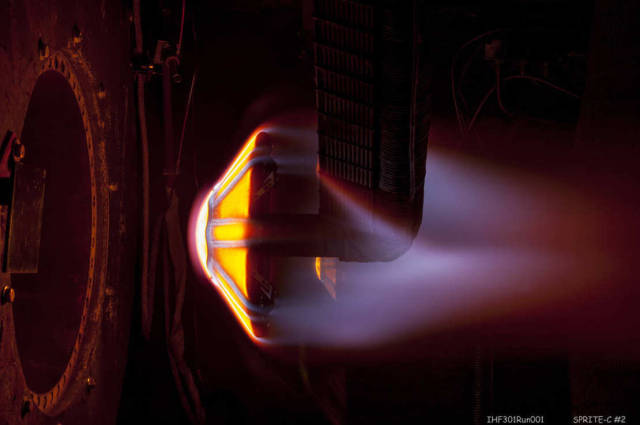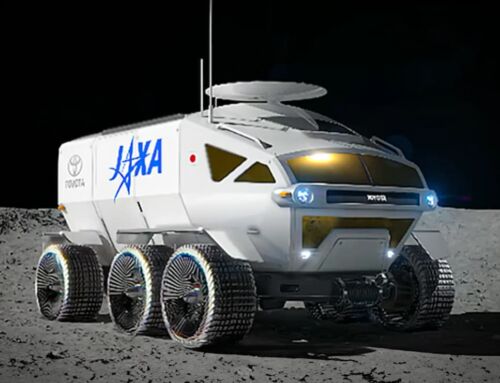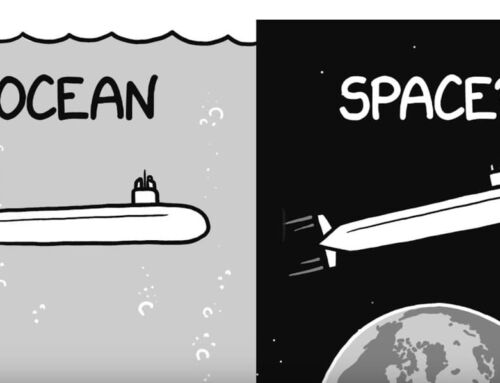NASA completes successful heat shield testing for future Mars exploration vehicles.
NASA’s missions and complex human exploration to the red planet, will need larger heat shields to protect the spacecraft, against the extreme heat of entering a planet’s atmosphere and decelerating at a safe altitude in the thin Martian atmosphere.
Today’s rockets have limited space to accommodate spacecraft and their heat shields. However, engineers at NASA’s Ames Research Center in Silicon Valley, California, have a solution to accommodate that limitation.
NASA’s Adaptive Deployable Entry and Placement Technology (ADEPT) is one solution. ADEPT is a mechanically-deployable heat shield concept using carbon fabric: a flexible heat shield that expands to “open” like an umbrella. Recently, Ames’ engineers successfully completed heating simulation testing of an ADEPT model under conditions akin to entering the Martian atmosphere.
The photograph above shows one of these tests. In it, a flow of extremely heated air is exiting the 21-inch diameter nozzle from the left, causing a bow shock to form in front of the ADEPT test article, which is attached to a water-cooled support arm. Surface temperatures on the test article reached 3,100 degrees Fahrenheit. The bluish-hue streaks, streaming away from the test article, are due to the decomposition of the resin-infused protective layers that prevent degradation of the stitched fabric joints.
Extensive instrumentation and imaging products from the test will be used to confirm how materials respond to the testing conditions, and thermo-structural design codes. The testing approach demonstrated with this test will enable future, more extensive testing of the ADEPT configuration – toward possible future use of the system on missions bigger than anything NASA’s ever flown.
source NASA






Leave A Comment